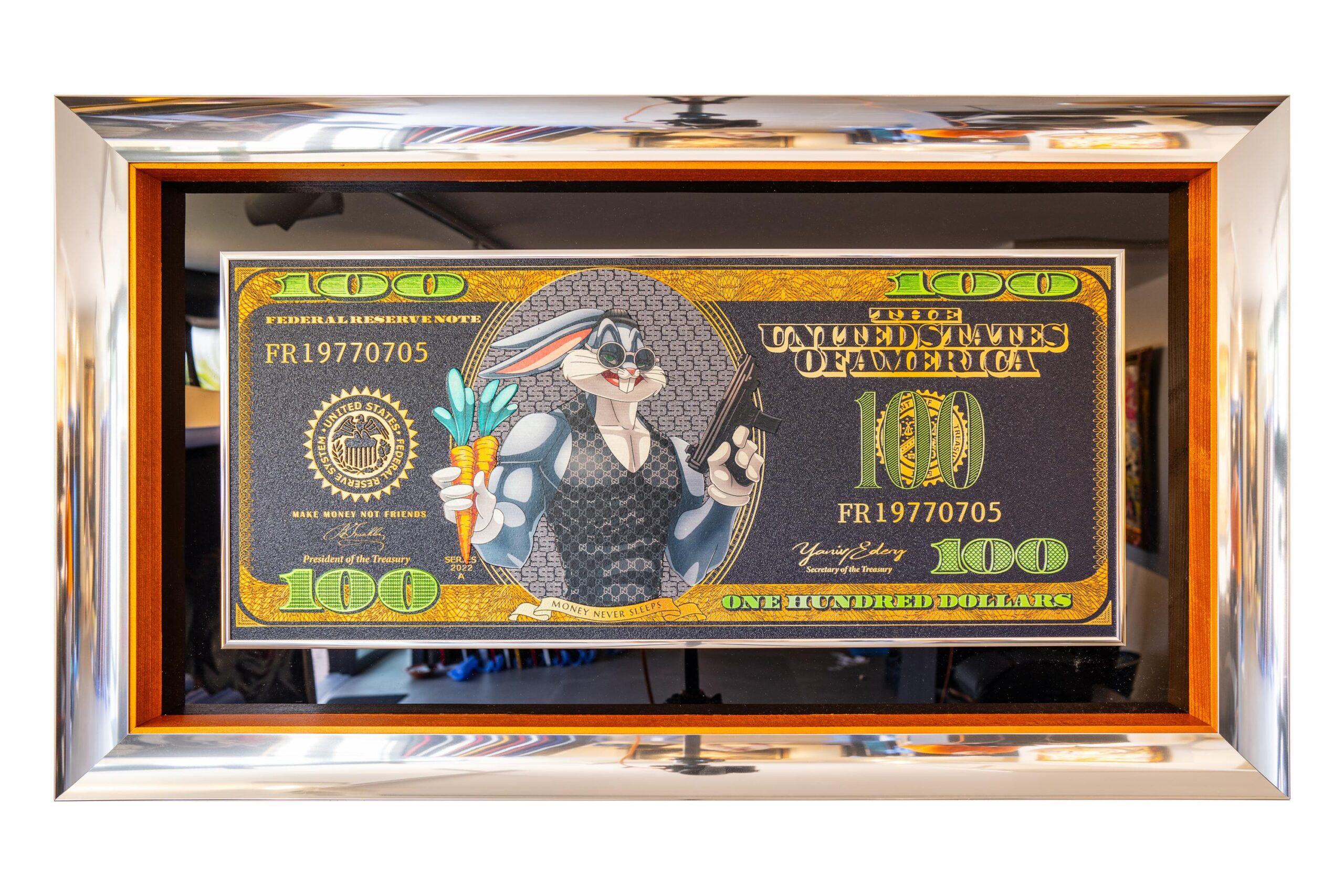
Verzending & Belasting
Vision XR Gallery verzendt wereldwijd met zorg, beveiligde verpakking en volledige verzekering. Alle kunstwerken worden professioneel ingepakt en voorzien van de nodige documentatie.
Binnen België biedt de galerij een premium lever- en ophangservice aan. Onze gespecialiseerde medewerkers zorgen voor een veilige levering en een perfecte plaatsing van het kunstwerk bij jou thuis of op kantoor.
Eventuele invoerrechten, douanekosten of lokale belastingen voor internationale zendingen zijn afhankelijk van het land van bestemming en zijn ten laste van de klant. Voor vragen over verzending of fiscale vereisten helpen we je graag persoonlijk verder.
Financiële Oplossingen
Vision XR Gallery biedt flexibele financiële oplossingen via ons eigen leasingbedrijf. Voor vennootschappen voorzien we huurkoopformules waarbij kunstwerken gefinancierd kunnen worden via vaste maandelijkse betalingen, volledig conform de Europese regelgeving.
Onze huurkoopformule is momenteel enkel beschikbaar voor bedrijven binnen Europa en biedt een belangrijk fiscaal voordeel: de maandelijkse betalingen zijn 100% aftrekbaar als kost.
Wil je meer weten? Lees dan verder op deze pagina en vraag je simulatie aan.
The artwork Dollar Bill Bugs Bunny by Yaniv Edery is a playful and powerful blend of humor, luxury and pop culture. On a hundred-dollar gold banknote, Bugs Bunny appears in a completely new role. No longer just the funny cartoon hero, but now a tough and confident icon. With a carrot in one hand and a weapon in the other, he directly challenges the viewer.
Edery uses strong contrasts and rich details to create tension. The classic dollar bill is given a modern and bold twist. The shiny gold background emphasizes wealth and power, while the caricatured figure of Bugs Bunny provides a surprising contrast. This creates a work that is both recognizable and innovative.
The combination of cartoon character and money symbol gives a clear message. Humor, power and luxury flow together in an image that exudes irony. Moreover, Edery’s embossing technique enhances the experience, making the details seem tangible and adding depth to the artwork.
Dollar Bill Bugs Bunny goes beyond a decorative image. It is a nod to consumerism, wealth and the power of popular culture. The work is energetic, rebellious and sophisticated at the same time. The artistic tension between cartoon and luxury coin makes this artwork unique and distinctive.
This artwork immediately grabs attention and leaves a lasting impression. It is a creative collision between fantasy and reality, executed with the typical precision and guts of Yaniv Edery.
Yaniv Edery is an internationally known artist who manages to bring together art, luxury and pop culture in striking works. His style combines color, relief and iconic figures. He often chooses powerful contrasts and symbolism to enhance emotion.
His works are playful and challenging, but also profound and expressive. By placing icons and symbols from modern culture in a luxurious setting, he gives new meaning to art. Edery continues to innovate himself and leaves the viewer constantly surprised.

Een certificaat van echtheid (COA) is een document van een gezaghebbende bron dat de echtheid van het kunstwerk verifieert. Veel COA’s zijn ondertekend door de kunstenaar, maar andere zijn ondertekend door de vertegenwoordigende galerie of de drukker die samen met de kunstenaar aan het werk heeft gewerkt. Voor werken op de secundaire markt zijn gemachtigde nalatenschappen of stichtingen vaak de uitgevende partij.
COA’s bevatten meestal de naam van de kunstenaar, de details (titel, datum, medium, afmetingen) van het werk in kwestie en waar mogelijk een afbeelding van het werk.